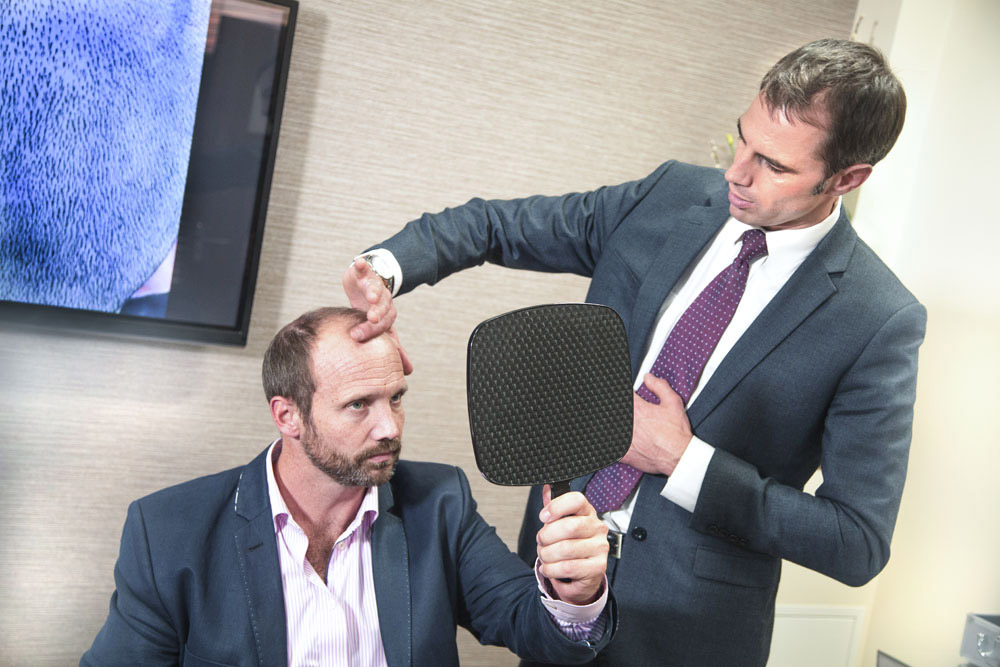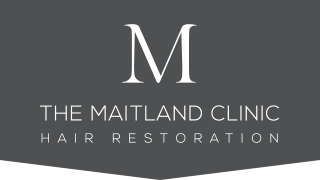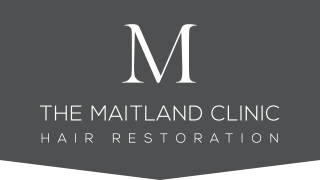Hair loss treatment: a comprehensive overview
30th April 2024

Losing your hair can be an upsetting or worrying experience. It’s something that many people go through, with research estimating that up to 80% of men and 50% of women will experience pattern loss, the most common form of hair loss, during the course of their life.
At The Maitland Clinic, we understand that finding the right information and treatment options can feel overwhelming. This blog post offers an in-depth look at the types, causes, and impact of hair loss, as well as the latest treatments innovations available. So, whether you’ve just started to notice a thinning hairline or you’ve been dealing with hair loss for some time, we’re here to help guide you through your options.
Understanding hair loss
Hair loss, or ‘alopecia’, refers to a noticeable decrease in hair density (thinning), or the balding of areas where hair normally grows. It can be temporary or permanent and may involve the scalp or other areas of the body.
There are several different types of hair loss which are characterised by different symptoms. The most common type of hair loss is androgenetic alopecia (male pattern baldness or female pattern baldness). Some other forms of hair loss include telogen effluvium, traction alopecia, and alopecia areata.
Hair loss treatments
Each individual is unique and the most effective type of treatment will depend on factors such as the nature and stage of your hair loss, your age, lifestyle, and overall goals.
Surgical treatments
Hair restoration surgery or a ‘hair transplant’ involves transferring the patient’s own healthy hair follicles to areas of the scalp which are thinning or bald. Usually, hair follicles are taken from the back and sides of the head, and transferred to the front of the head and the crown – where hair follicle miniaturisation (where the hair follicle reduces in size) and hair loss has happened.
Surgical hair loss interventions are most suitable for people who are in the later stages of hair loss with permanent baldness (such as pattern hair loss), and who also have enough healthy donor hair follicles. It’s not suitable for people with other types of hair loss such as patchy hair loss (alopecia areata) or temporary hair loss. Dr Ball and his team undertake in-depth consultations with each individual to assess suitability.
At The Maitland Clinic, we use the most advanced and innovative techniques to ensure our patients experience the most cutting-edge treatments available. There are different types of surgical hair loss treatments which use different methods to harvest the healthy hair follicles. We can help you explore which option might be right for you:
Follicular Unit Transplantation technique (FUT)
FUT or ‘strip’ surgery involves removing a thin strip of skin from a permanent area of the scalp (such as the back of the head) where hair is genetically programmed to grow for life (the donor area). The healthy hair follicles are then harvested from this scalp tissue (hair grafts) and placed into tiny incisions made in the scalp in the area of hair loss. The donor area is stitched up, leaving a scar. This scar will usually be concealed by slightly longer hair.
Learn more about FUT technique.
Follicular Unit Extraction technique (FUE)
Like FUT, FUE involves transferring hair from a donor area to the area of hair loss. However, rather than removing a strip of skin from an area of the scalp where hair permanently grows, FUE involves extracting individual hair follicles directly from this area. The FUE donor hair extractions leave tiny dot scars which are usually not noticeable unless the hair is shaved extremely short. These individual hairs are then placed into the targeted recipient area through tiny incisions in the scalp.
Learn more about FUE technique.
Non-surgical treatments
As research continues to advance, a wide range of non-surgical state-of-the-art hair loss treatments have emerged. These trichology treatments are generally most suitable for patients in the early stages of hair loss, aiming to prevent, reduce, or delay the rate at which hair loss happens, as well as encourage healthier hair growth.
Medication
A wide range of hair loss medication options exist, for example:
- Minoxidil (oral or topical)
- Finasteride (oral or topical)
- Combined topical minoxidil and finasteride
- Dutasteride (oral or topical).
These medications all work slightly differently to slow hair loss and improve the overall appearance of the hair. The right medication for you depends on a range of factors such as your specific hair loss condition, the extent of your condition, your genetics, and your gender. Our highly skilled team at The Maitland Clinic undertake extensive consultations with each individual to make sure we can identify the safest and most effective medication and dosage for you.
Read more about hair loss tablets and medication.
Laser treatment
Theradome is a high-quality low-level laser therapy device shaped like a helmet. The device emits a specific wavelength of light into the scalp which is then absorbed by the cells of the hair follicles. It’s thought that the laser light stimulates a series of reactions in the cells which lead to increased energy and blood flow to the hair follicles, as well as reduced inflammation. Over time, this laser therapy can help to lead to healthier hair growth, such as improved hair density, and improved scalp condition.
Platelet-Rich Plasma (PRP)
PRP treatment is an innovative treatment that encourages the body to naturally stimulate hair growth. A small amount of blood is drawn from the patient and is processed to concentrate the platelets (a blood cell which produces growth factors). This platelet-rich plasma is then injected back into the scalp. The increase in growth factors helps to promote cell regeneration in the scalp and increase the blood supply to the hair follicles. Over time, this stimulates the development of higher quality hair follicles, leading to a wide range of benefits that can improve hair loss conditions.
Although more research is needed on PRP before it can be approved by the FDA for treating hair loss, existing clinical studies have shown that PRP treatments are associated with increased hair growth.
Choosing the right hair loss treatment
At The Maitland Clinic, each individual undergoes an in-depth consultation service. This helps us to identify your specific hair loss condition and consider any other health needs you may have. During the consultation, we’ll be able to offer you clear advice on your options, providing extensive information on the pros and cons of each treatment. We’ll also be able to give you an insight into the realistic results to expect.
We encourage all potential patients to then spend some time considering their options and are happy to answer any further questions.
Throughout the treatment process, we will regularly monitor your progress and adjust your treatment regime according to your response and the latest research available.
Hair loss treatments at The Maitland Clinic
At The Maitland Clinic, we are at the forefront of highly effective non-surgical and surgical hair loss treatments. Our team has world-class knowledge and a wealth of experience in this field, taking a thorough, ethical, and compassionate approach to all hair loss treatments.
To learn more about your options and the different hair loss treatments available, get in touch with us today by completing our enquiry form or calling us on 02392 706122.










